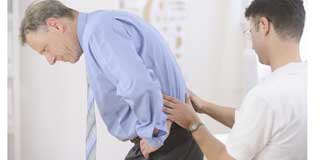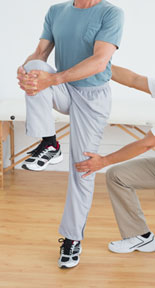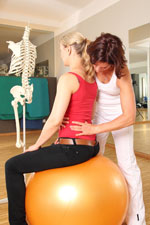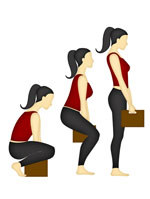5 Preventative Methods You Should Follow Today
By Sherwin Nicholson | Updated May 1 2020

Available Treatments for Your Back
Many typical methods of treatment that you’ll come across will vary widely and are different from the specific method introduced on this site.
These methods of treatment include (but are not limited to): chiropractic, massage, acupuncture, yoga, weight training, a combination of anti-inflammatory applications with rest and more.
The most popular to date are: Acupuncture, Physical Activity, Electrical Muscle Stimulation (EMS) and Exercise Therapy.
(take a look at this article from Well-beingsecrets for more natural remedies that you can use for your back.)
Surgery is also a recommended treatment but is generally advised to be the last resort. Most of us for very necessary reasons of course must take this option when all other methods have failed. It is important to respect anyone’s decision to pursue this treatment. Although there is always a risk of the complications involved with surgery, with enough support the outcomes can be very beneficial and life changing.
Most treatments are very complementary
Many of these treatments share the same techniques and plans as some areas are universally understood and shared.
For example, acupuncture, chiropractic and physiotherapy use EMS. Yoga and weight training use elements of physiotherapy. Acupuncture and physiotherapy use elements of massage therapy. Chiropractic, yoga and physiotherapy use elements of physical therapy. You can say one field comes from another or simply that they are unique but share complementary, beneficial and universal techniques.
Each of these methods has a valuable place in the field of care for helping patients with low back pain. It is important to dedicate the time and effort required by each treatment chosen in order to address the underlying problems with your back.
Treatments require your time and commitment
Most treatments require a commitment of many weeks to months for long-term progress and to see beneficial results. If your treatment works well for you, you may find a year round commitment to chiropractic, yoga or massage practical.

Follow your preferred or recommended treatment plan for the duration agreed between you and your care provider. Don’t stop treatment when it no longer hurts, but when the underlying problem is also resolved which is usually beyond the time that the associated pain subsides.
If you stop your treatment plan prematurely or entirely, you will not have adequately fixed the source of the problem and may hurt again. This causes inconvenience to you and your provider in comfort, time and expense.
Don’t lose sight of your long term goal
The goal should be: to prevent future problems, to avoid the return of previous ones, and to allow your back more opportunity to become better conditioned to handle more challenging demands placed on it. Long term stability is essential and also a faster recovery from unexpected strains and injuries in the future.
When you have found the right treatment method that helps you in the long term, there are some universal tips for protecting yourself from more injury.
5 Key Areas of Prevention You Must Follow
1. Maintain a Healthy Posture
Healthy posture is paramount to preventing low back pain.
There are 4 factors that can exacerbate your back.
These factors are part of our daily routine and affect our posture.
They are standing, sitting, lifting and body weight.
When it comes to a healthy posture, most people no longer assume the natural posture and adopt a more unbalanced form. After a while, good posture almost seems unnatural and can be tiring to maintain at times. A healthy posture is a spine neutral one.

This means that you are standing or sitting so that your spine is following its natural shape from head to pelvis. Your spine has a natural curve that evenly distributes weight or force place on it evenly throughout the vertebrae and discs.
How well your lumbar, abdominal, hip and leg muscles are conditioned directly affect the overall natural and neutral curve and therefore your posture.
Various ways and descriptions to convey how to adopt a correct posture are available through medical advice, consultation, therapy, books and the Internet. Please work actively to learn the value of having and maintaining healthy posture.
2. Standing instead of sitting
A general rule of thumb for healthy posture that the center of the head, the spine and the hips should be in line vertically and plumb with as little muscular effort required to avoid fatigue.
This is both in the standing or seated position. If you find this difficult, then there is an imbalance in muscle groups and the joints. This should be corrected as you are straining to accommodate your ‘new’ healthy posture.
Standing requires the least amount of effort and exertion on your body and causes the least stress to the spine.
When you are standing, the muscles required to keep a healthy posture are actively recruited and working. Their concerted effort serves to minimize energy use on individual muscle groups so that no specific group is overcompensating for another.
3. Sitting using modified positions
Sitting places 2.5X more stress on the spine than sitting does. This is because the muscles that were actively working to maintain correct posture during standing are no longer being consciously used. They are relaxed and have ‘shut down’. Some become shortened, stretched or compressed during sitting and circulation is also compromised.

During this time, the full weight of the upper body is being placed on the lumbar spine without any protection. The spine begins to bend, twist and compress. The use of a seat with poor lumbar support only makes matters worse.
It would be preferred to sit on a seat that allows one to be upright without any support at all (similar to a cushioned stool or piano bench) or sitting on a chair with less dependency on the lumbar support.
A useful modification would be to cushion the seat and angle both legs downward in front of you so as to help tilt your pelvis forward. This is more natural for the spine and takes pressure off the lower discs thereby reducing discomfort during extended periods of sitting.
A second modification is to sit in the normal position but to place one leg down to the side of the seat beside you. Here one leg is pointing forward and the other is pointing down to the floor. This appears more as if you are in an assisted ‘lunge’ position and as though you are straddling part of your seat.
This position allows more of a neutral tilt to the pelvis to relieve relieve disc pressure. Using your legs in an alternating pattern will help to balance out pressure imposed from the lunge.
Since sitting has the effect of shutting down the needed activity in your postural muscles, it is important to place a time limit on the amount of sitting that you do. For every half hour of sitting, there should be a period of standing and stretching. Anywhere from 1 to 5 minutes should help.
Although it may seem difficult to find time in our busy lives, this short time can be used efficiently as a break, walk, errand, etc. that can become more transparent over time, beneficial and desired. It reduces fatigue and allows for greater productivity while sitting.
4. Lifting using your legs and NOT by leaning over
Lifting puts our back at highest risk for injury, and most acute and chronic issues occur at this time. Movements that require lifting should be initiated safely and with good lifting technique. This is done first not only with proper posture but by using the hips and legs and often as possible. As a rule of thumb, the more that you use your hips and legs, the less that you will use your back for the same movement, and the less it compensates.
One should lift an object (on the ground for example) as though intending to bring the object to the waist while keeping the back upright and positioned in a squatting position. One should also actively contract the abdominal muscles just before the lift.

This method has three purposes.
First, It engages and activates the muscles of the lumbar spine before the lift.
Second, the abdominal muscles are activated to help reduce some of the load from off of the spine.
Third, it engages and activates the gluteal muscles before the other leg muscles do.
The gluteal muscles (butt muscles) are the primary ‘movers’ involved in lifting heavy objects and for giving forward movement and power. Both the lumbar, abdominal and gluteal muscles are major muscles needed for every lift.
Poor posture, conditioning, lack of targeted exercise, a poor program of exercises for the lower back and bad lifting habits can cause a problem with these three areas during a lift and may lead to acute and chronic injury.
5. Controlling your body weight
Excess body weight is a serious issue for many in the westernized regions of the world. Because weight gain can be a slow gradual process, its effects on the spine are not as noticeable over time but is a serious concern.
Extra weight contributes to:
- A poor or worsening posture
- Increased pressure on the curvature of the spine
- Increased pressure (usually imbalanced) on the lumbar discs
- Added stress on the hip and knee joint, strain on the muscles and ligaments of the spine, hips and knees
- Weakness in the abdominal muscles and even osteoarthritic conditions
- General muscle fatigue that can delay a plan for relief.
It is necessary to follow a structured weight loss program along with a program that can show you safe posture practices. By losing extra body weight, you will amplify the benefits felt from your program faster and will achieve faster results.
Please consult a professional for a suitable long term weight loss program before any back program or treatment. It may be safer for you to manage your weight before engaging in any activity.
Do you need some more preventative tips?
How to sleep better with much less pain
How to overcome your back spasms
